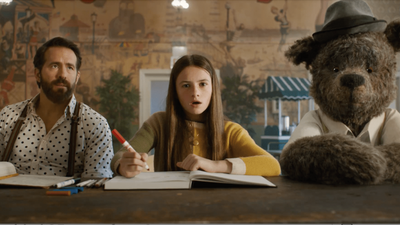The roster of IFs gets more populous as the movie goes on, giving Krasinski a chance to cast a lot of his famous friends in voice parts, including Steve Carell as Blue, a fuzzy giant who’s actually purple; Emily Blunt as a unicorn; and Bill Hader as a banana who works as a water aerobics instructor at the retirement home. A plan is hatched to find the now-adult creators of the IFs and reunite them with their old chums. Without putting too fine a point on it, the movie advocates reconnecting with childhood sources of wonder and comfort because many of the traumas we face in the adult world are rooted in childhood.
This is probably going to sound strange because they’re very different movies, but the two films that “IF” most reminded me of are Steven Spielberg’s “E.T.” and the original 1971 “Willy Wonka and the Chocolate Factory,” the one with Gene Wilder as Wonka. From “Wonka,” “IF” borrows a matter-of-fact, at times Roald Dahl-like presentation of fantastic situations and characters, which are unveiled in a series of scenes so self-contained that it sometimes feels as if you’re watching a collection of short films (and in a couple of cases, music videos) with recurring characters. (The deadpan energy of Reynolds’ character is often Wonka-esque. So is his quasi-magician outfit.)
From “E.T.,” and Spielberg’s fantasies generally, the movie adopts an earnest, focused attitude towards big, simple emotions, something that was more common in old movies than it is now. “IF” is one of the rare recent movies that wants to build a bridge between past and present modes and technologies. The 1950 movie version of “Harvey,” starring James Stewart as Elwood P. Dowd, a man who claims to have an imaginary friend who’s a giant rabbit, plays on a TV in “IF.” As it happens, the dog in “E.T.” is also named Harvey, and a character named Elwood P. Dowd founded the city in the animated series “Foster’s Home for Imaginary Friends.” Plus, “IF” was shot by Janusz Kaminski, Spielberg’s cinematographer for over 30 years, and has that Spielbergian shafts-of-light-through-dusty-air look, as well as a channeling-John-Williams score by Michael Giacchino, and the confidence just to say, “This is the world the character live in, now let’s just roll with it and not feel like we have to explain everything.”

